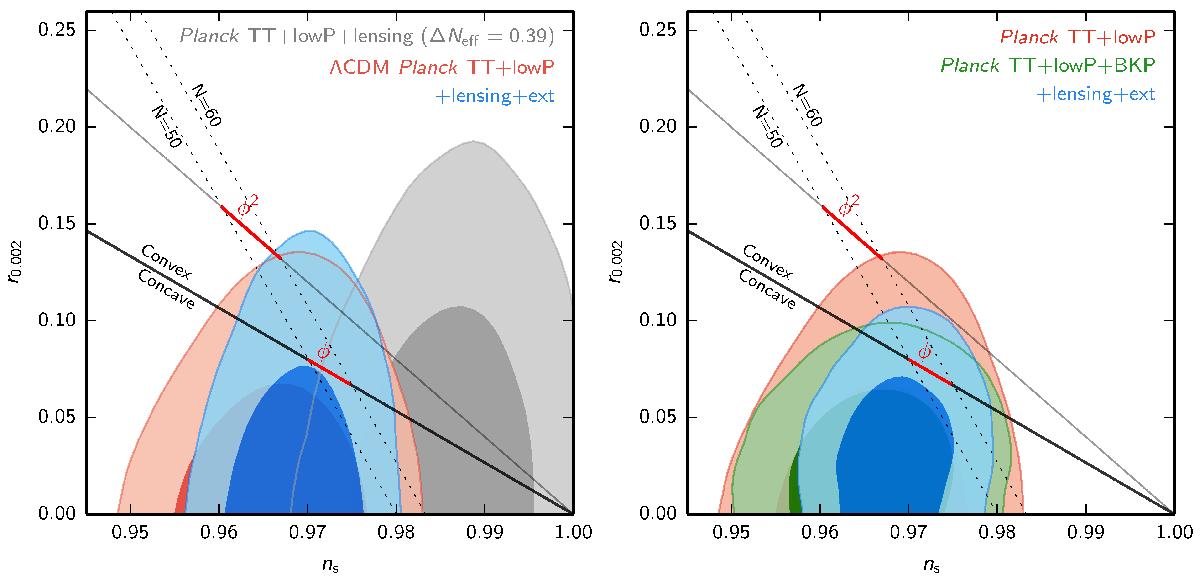Fig. 21

Left: constraints on the tensor-to-scalar ratio r0.002 in the ΛCDM model, using Planck TT+lowP and Planck TT+lowP+lensing+BAO+JLA+H0 (red and blue, respectively) assuming negligible running and the inflationary consistency relation. The result is model-dependent; for example, the grey contours show how the results change if there were additional relativistic degrees of freedom with ΔNeff = 0.39 (disfavoured, but not excluded, by Planck). Dotted lines show loci of approximately constant e-folding number N, assuming simple V ∝ (φ/mPl)p single-field inflation. Solid lines show the approximate ns–r relation for quadratic and linear potentials, to first order in slow roll; red lines show the approximate allowed range assuming 50 <N< 60 and a power-law potential for the duration of inflation. The solid black line (corresponding to a linear potential) separates concave and convex potentials. Right: equivalent constraints in the ΛCDM model when adding B-mode polarization results corresponding to the default configuration of the BICEP2/Keck Array+Planck (BKP) likelihood. These exclude the quadratic potential at a higher level of significance compared to the Planck-alone constraints.
Current usage metrics show cumulative count of Article Views (full-text article views including HTML views, PDF and ePub downloads, according to the available data) and Abstracts Views on Vision4Press platform.
Data correspond to usage on the plateform after 2015. The current usage metrics is available 48-96 hours after online publication and is updated daily on week days.
Initial download of the metrics may take a while.




